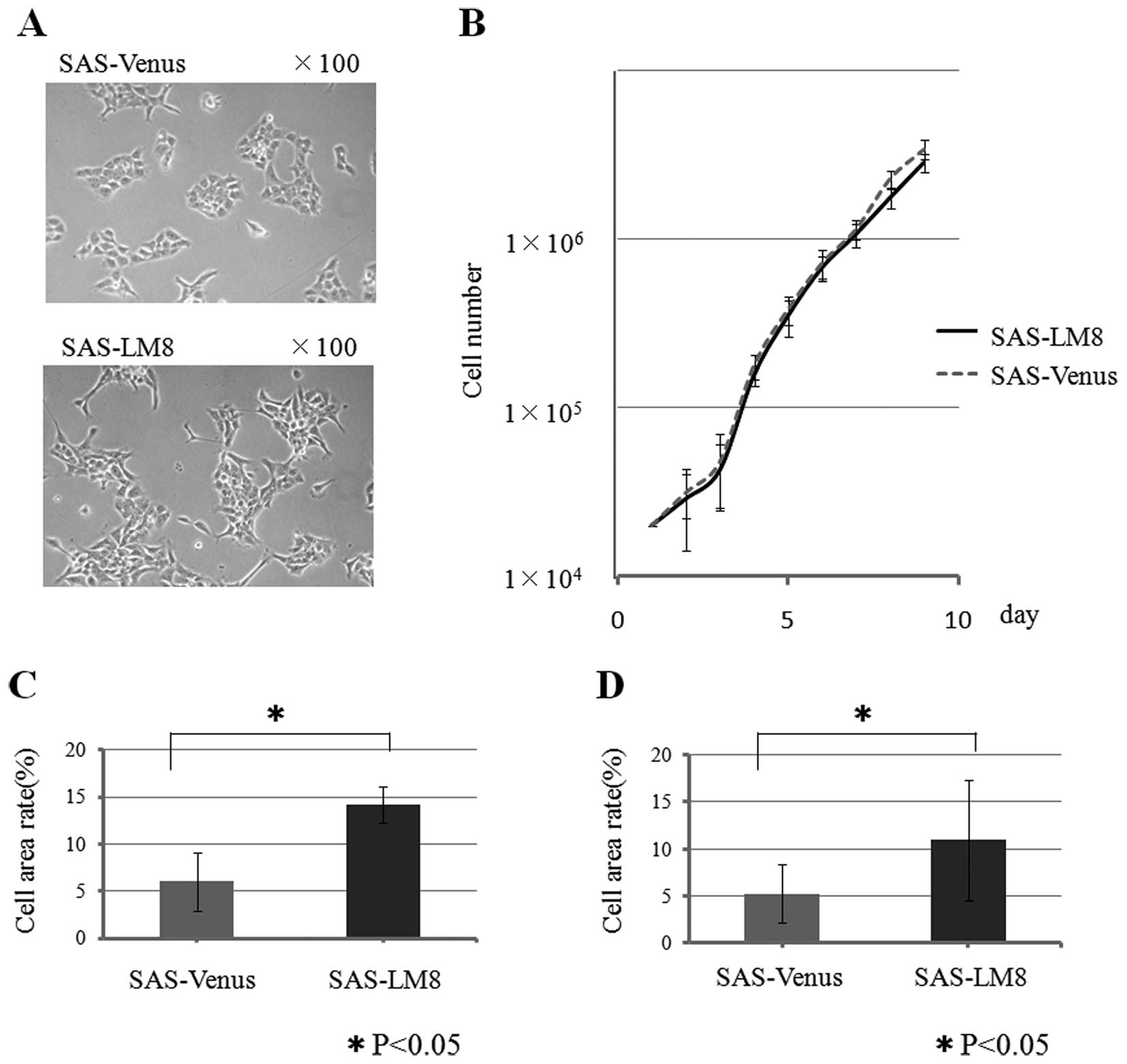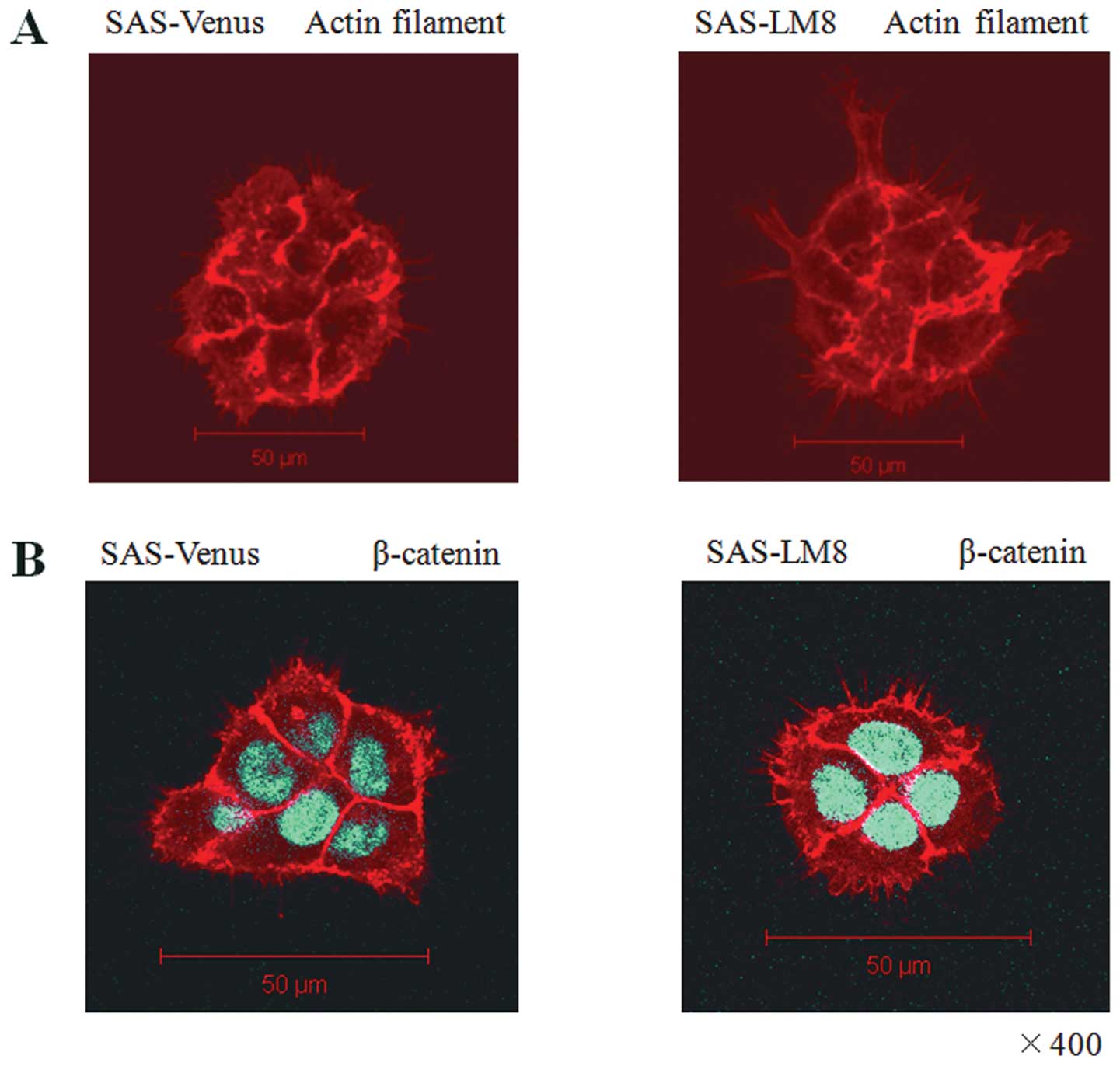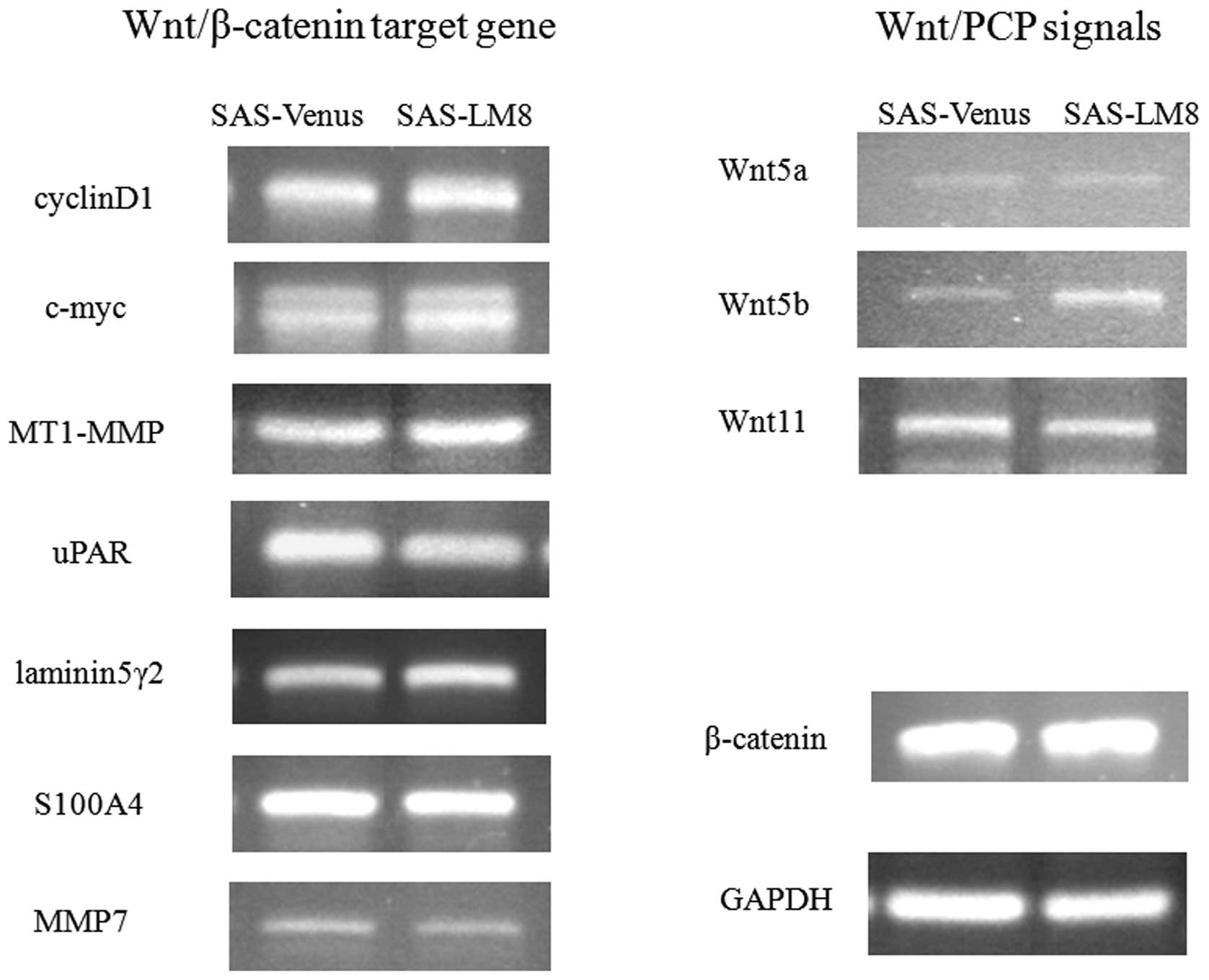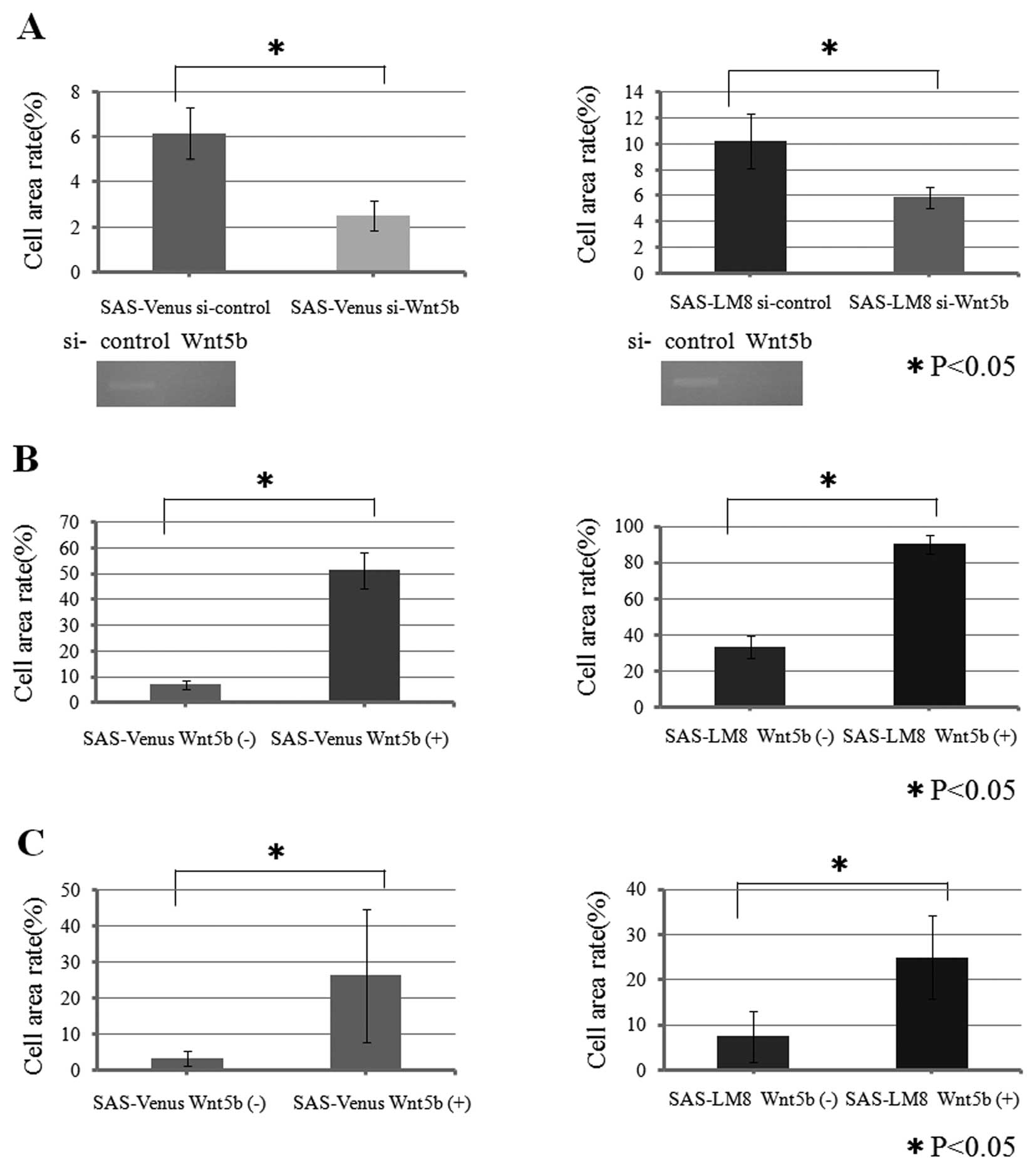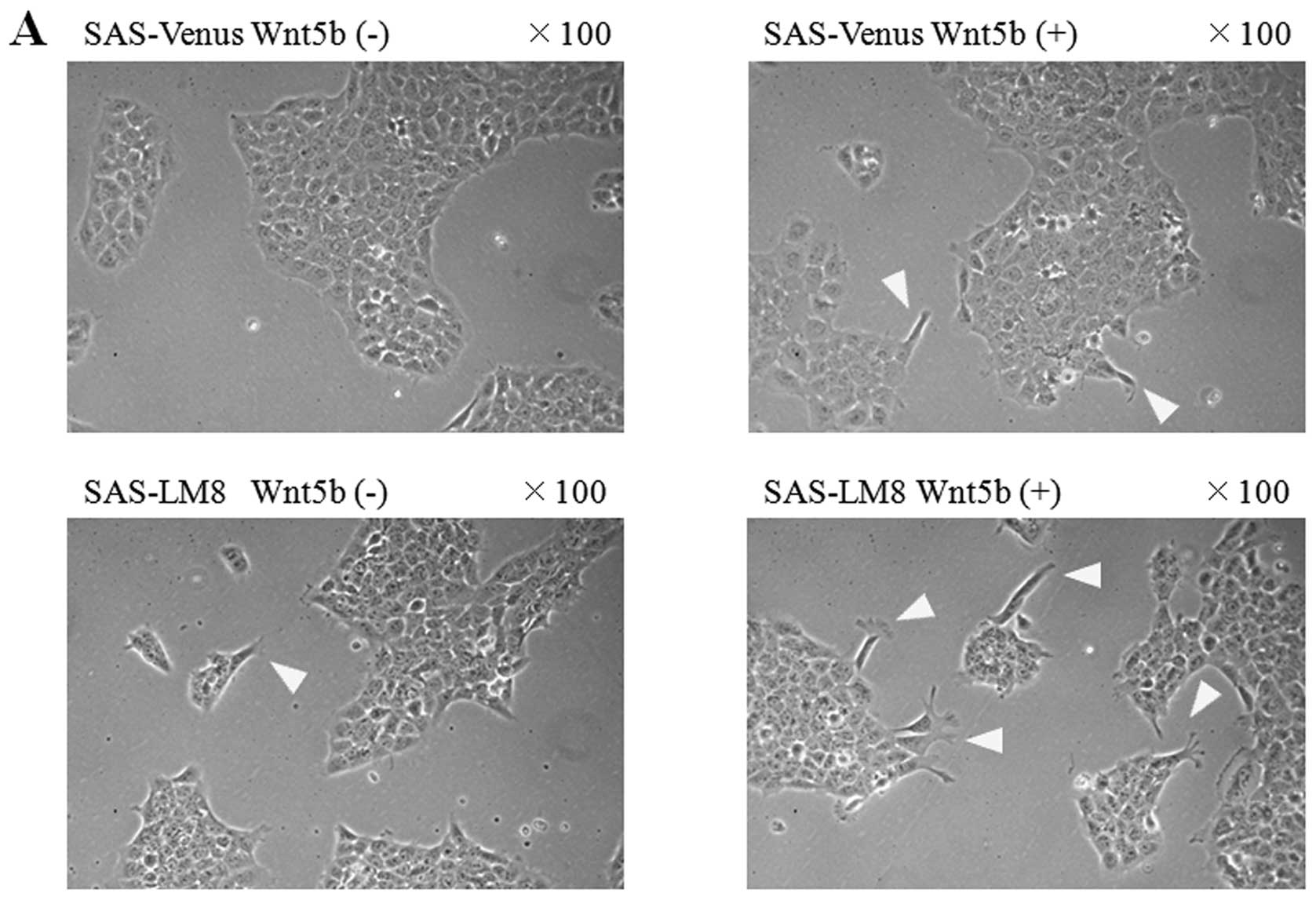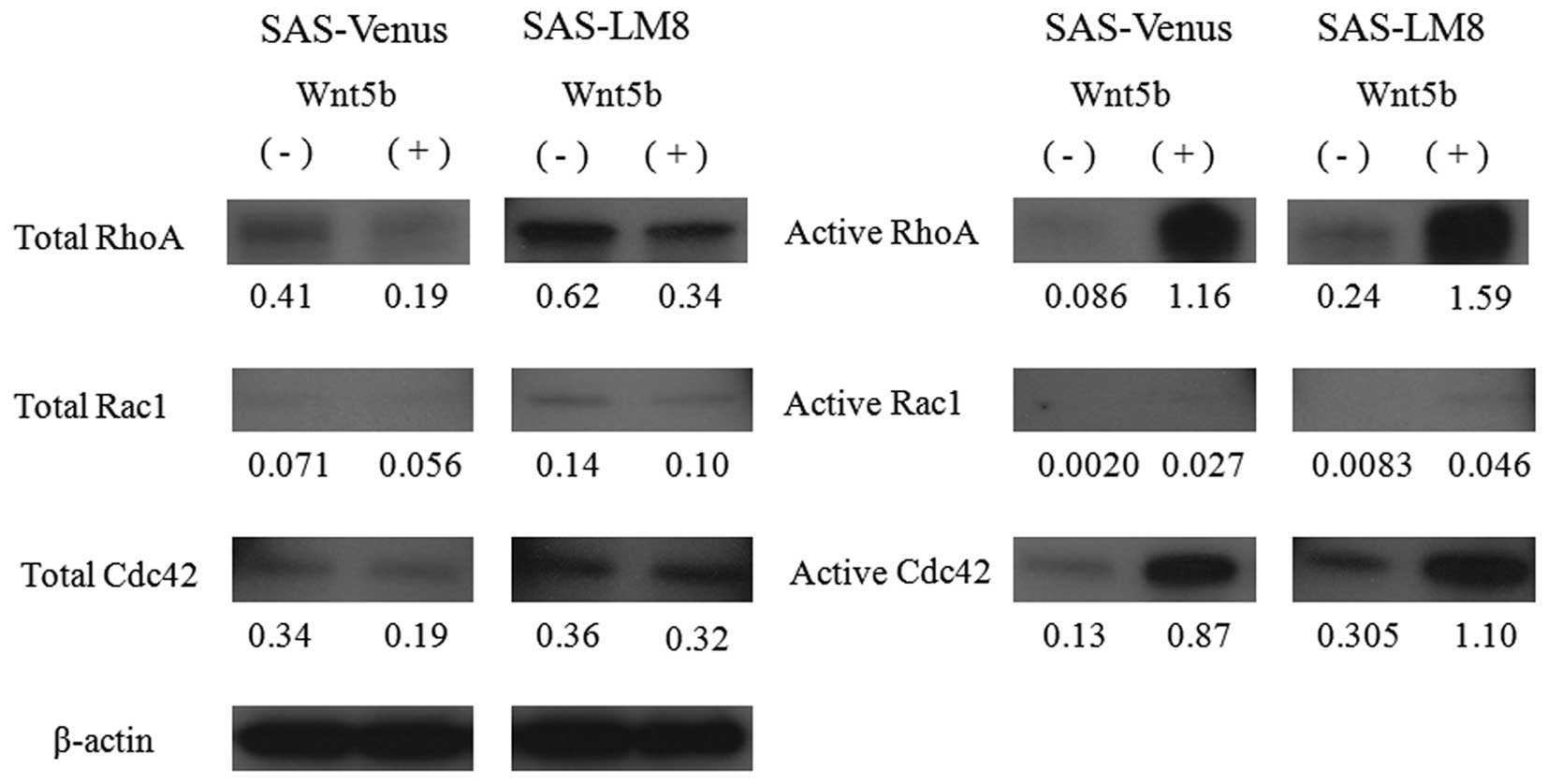|
1.
|
Rousseau A and Badoual C: Head and neck:
squamous cell carcinoma: an overview. Atlas Genet Cytogenet Oncol
Haematol. 16:145–155. 2012.
|
|
2.
|
Howell GM and Grandis JR: Molecular
mediators of metastasis in head and neck squamous cell carcinoma.
Head Neck. 27:710–717. 2005. View Article : Google Scholar : PubMed/NCBI
|
|
3.
|
Sahai E: Illuminating the metastatic
process. Nat Rev Cancer. 7:737–749. 2007. View Article : Google Scholar : PubMed/NCBI
|
|
4.
|
Veeman MT, Axelrod JD and Moon RT: A
second canon: functions and mechanisms of β-catenin-independent Wnt
signaling. Dev Cell. 5:367–377. 2003.PubMed/NCBI
|
|
5.
|
Nelson WJ and Nusse R: Convergence of Wnt,
β-catenin, and cadherin pathways. Science. 303:1483–1487. 2004.
|
|
6.
|
Kühl M, Sheldahl LC, Park M, Miller JR and
Moon RT: The Wnt/Ca2+ pathway: a new vertebrate Wnt
signaling pathway takes shape. Trends Genet. 16:279–283. 2000.
|
|
7.
|
Miller JR: The Wnts. Genome Biol. 3(1):
reviews. 3001.1–3001.15. 2001. View Article : Google Scholar
|
|
8.
|
Kikuchi A and Yamamoto H: Tumor formation
due to abnormalities in the β-catenin-independent pathway of Wnt
signaling. Cancer Sci. 99:202–208. 2008.
|
|
9.
|
Kikuchi A: Wnt signaling; its
abnormalities and diseases. Seikagaku. 81:780–792. 2009.PubMed/NCBI
|
|
10.
|
Polakis P: The many ways of Wnt in cancer.
Curr Opin Genet Dev. 17:45–51. 2007. View Article : Google Scholar : PubMed/NCBI
|
|
11.
|
Kikuch A: Tumor formation by genetic
mutations in the components of the Wnt signaling pathway. Cancer
Sci. 94:225–229. 2003. View Article : Google Scholar : PubMed/NCBI
|
|
12.
|
Takahashi K, Kanazawa H, Akiyama Y, Tazaki
S, Takahara M, Muto T, Tanzawa H and Sato K: Establishment and
characterization of a cell line (SAS) from poorly differentiated
human squamous cell carcinoma of the tongue. J Jpn Stomatol Soc.
38:20–28. 1989.
|
|
13.
|
Morita Y, Hata K, Nakanishi M, Nishisho T,
Yura Y and Yoneda T: Cyclooxygenase-2 promotes tumor
lymphangiogenesis and lymph node metastasis in oral squamous cell
carcinoma. Int J Oncol. 41:885–892. 2012.PubMed/NCBI
|
|
14.
|
Shtutman M, Zhurinsky J, Simcha I,
Albanese C, D’Amico M, Pestell R and Ben-Ze’ev A: The cyclin D1
gene is a target of the β-catenin/LEF-1 pathway. Proc Natl Acad Sci
USA. 96:5522–5527. 1999.
|
|
15.
|
Tetsu O and McCormick F: β-catenin
regulates expression of cyclin D1 in colon carcinoma cells. Nature.
398:422–426. 1999.
|
|
16.
|
He TC, Sparks AB, Rago C, Hermeking H,
Zawel L, Da Costa LT, Morin PJ, Vogelstein B and Kinzler KW:
Identification of c-myc as a target of the APC pathway. Science.
281:1509–1512. 1998. View Article : Google Scholar : PubMed/NCBI
|
|
17.
|
Takahashi M, Tsunoda T, Seiki M, Nakamura
Y and Furukawa Y: Identification of membrane-type matrix
metalloproteinase-1 as a target of the β-catenin/Tcf4 complex in
human colorectal cancers. Oncogene. 21:5861–5867. 2002.
|
|
18.
|
Brabletz T, Jung A, Dag S, Hlubek F and
Kirchner T: β-catenin regulates the expression of the matrix
metalloproteinase-7 in human colorectal cancer. Am J Pathol.
155:1033–1038. 1999.
|
|
19.
|
Hlubek F, Jung A, Kotzor N, Kirchner T and
Brabletz T: Expression of the invasion factor laminin γ2 in
colorectal carcinomas is regulated by β-catenin. Cancer Res.
61:8089–8093. 2001.
|
|
20.
|
Mann B, Gelos M, Siedow A, Hanski ML,
Gratchev A, Ilyas M, Bodmer WF, Moyer MP, Riecken EO, Buhr HJ and
Hanski C: Target genes of beta-catenin-T cell
factor/lymphoid-enhancer-factor signaling in human colorectal
carcinomas. Proc Natl Acad Sci USA. 96:1603–1608. 1999. View Article : Google Scholar : PubMed/NCBI
|
|
21.
|
Hiendlmeyer E, Regus S, Wassermann S,
Hlubek F, Haynl A, Dimmler A, Koch C, Knoll C, van Beest M, Reuning
U, Brabletz T, Kirchner T and Jung A: β-catenin up-regulates the
expression of the urokinase plasminogen activator in human
colorectal tumors. Cancer Res. 64:1209–1214. 2004.
|
|
22.
|
Stein U, Arlt F, Walther W, Smith J,
Waldman T, Harris ED, Mertins SD, Heizmann CW, Allard D, Birchmeier
W, Schlag PM and Shoemaker RH: The metastasis-associated gene
S100A4 is a novel target of beta-catenin/T-cell factor signaling in
colon cancer. Gastroenterology. 131:1486–1500. 2006. View Article : Google Scholar : PubMed/NCBI
|
|
23.
|
Katoh M: WNT/PCP signaling pathway and
human cancer (Review). Oncol Rep. 14:1583–1588. 2005.PubMed/NCBI
|
|
24.
|
Sahai E and Marshall CJ: Rho-GTPases and
cancer. Nat Rev Cancer. 2:133–142. 2002. View Article : Google Scholar
|
|
25.
|
Price LS and Collard JG: Regulation of the
cytoskeleton by Rho-family GTPases: implications for tumour cell
invasion. Cancer Biol. 11:167–173. 2001. View Article : Google Scholar : PubMed/NCBI
|
|
26.
|
Vega FM and Ridley AJ: Rho GTPases in
cancer cell biology. FEBS Lett. 582:2093–2101. 2008. View Article : Google Scholar : PubMed/NCBI
|
|
27.
|
Iwai S, Yonekawa A, Harada C, Hamada M,
Katagiri W, Nakazawa M and Yura Y: Involvement of the Wnt-β-catenin
pathway in invasion and migration of oral squamous carcinoma cells.
Int J Oncol. 37:1095–1103. 2010.
|
|
28.
|
Kremenevskaja N, von Wasielewski R, Rao
AS, Schöfl C, Andersson T and Brabant G: Wnt-5a has tumor
suppressor activity in thyroid carcinoma. Oncogene. 24:2144–2154.
2005. View Article : Google Scholar : PubMed/NCBI
|
|
29.
|
Dejmek J, Dejmek A, Säfholm A, Sjölander A
and Andersson T: Wnt-5a protein expression in primary dukes B colon
cancers identifies a subgroup of patients with good prognosis.
Cancer Res. 65:9142–9146. 2005. View Article : Google Scholar : PubMed/NCBI
|
|
30.
|
Weeraratna AT, Jiang Y, Hostetter G,
Rosenblatt K, Duray P, Bittner M and Trent JM: Wnt5a signaling
directly affects cell motility and invasion of metastatic melanoma.
Cancer Cell. 1:279–288. 2002. View Article : Google Scholar : PubMed/NCBI
|
|
31.
|
Kurayoshi M, Oue N, Yamamoto H, Kishida M,
Inoue A, Asahara T, Yasui W and Kikuchi A: Expression of Wnt-5a is
correlated with aggressiveness of gastric cancer by stimulating
cell migration and invasion. Cancer Res. 66:10439–10448. 2006.
View Article : Google Scholar : PubMed/NCBI
|
|
32.
|
Kanazawa A, Tsukada S, Kamiyama M,
Yanagimoto T, Nakajima M and Maeda S: Wnt5b partially inhibits
canonical Wnt/β-catenin signaling pathway and promotes adipogenesis
in 3T3-L1 preadipocytes. Biochem Biophys Res Commun. 330:505–510.
2005.PubMed/NCBI
|
|
33.
|
van Tienen F, Laeremans H, van der Kallen
C and Smeets H: Wnt5b stimulates adipogenesis by activating PPARγ,
and inhibiting the β-catenin dependent Wnt signaling pathway
together with Wnt5a. Biochem Biophys Res Commun. 387:207–211.
2009.PubMed/NCBI
|
|
34.
|
Deraz EM, Kudo Y, Yoshida M, Obayashi M,
Tsunematsu T, Tani H, Siriwardena SBSM, Kiekhaee MR, Qi G, Iizuka
S, Ogawa I, Campisi G, Muzio LL, Abiko Y, Kikuchi A and Takata T:
MMP-10/stromelysin-2 promotes invasion of head and neck cancer.
PLoS One. 6:1–14. 2011. View Article : Google Scholar : PubMed/NCBI
|
|
35.
|
Weaver AM: Invadopodia: specialized cell
structures for cancer invasion. Clin Exp Metastasis. 23:97–105.
2006. View Article : Google Scholar : PubMed/NCBI
|
|
36.
|
Friedl P and Wolf K: Plasticity of cell
migration: a multiscale tuning model. J Cell Biol. 188:11–19. 2010.
View Article : Google Scholar : PubMed/NCBI
|
|
37.
|
Sahai E: Mechanisms of cancer cell
invasion. Curr Opin Genet Dev. 15:87–96. 2005. View Article : Google Scholar
|
|
38.
|
Rørth P: Collective cell migration. Annu
Rev Cell Dev Biol. 25:407–429. 2009.
|
|
39.
|
Gaggioli C, Hooper S, Hidalgo-Carcedo C,
Grosse R, Marshall JF, Harrington K and Sahai E: Fibroblast-led
collective invasion of carcinoma cells with differing roles for
RhoGTPases in leading and following cells. Nat Cell Biol.
9:1392–1400. 2007. View Article : Google Scholar : PubMed/NCBI
|















